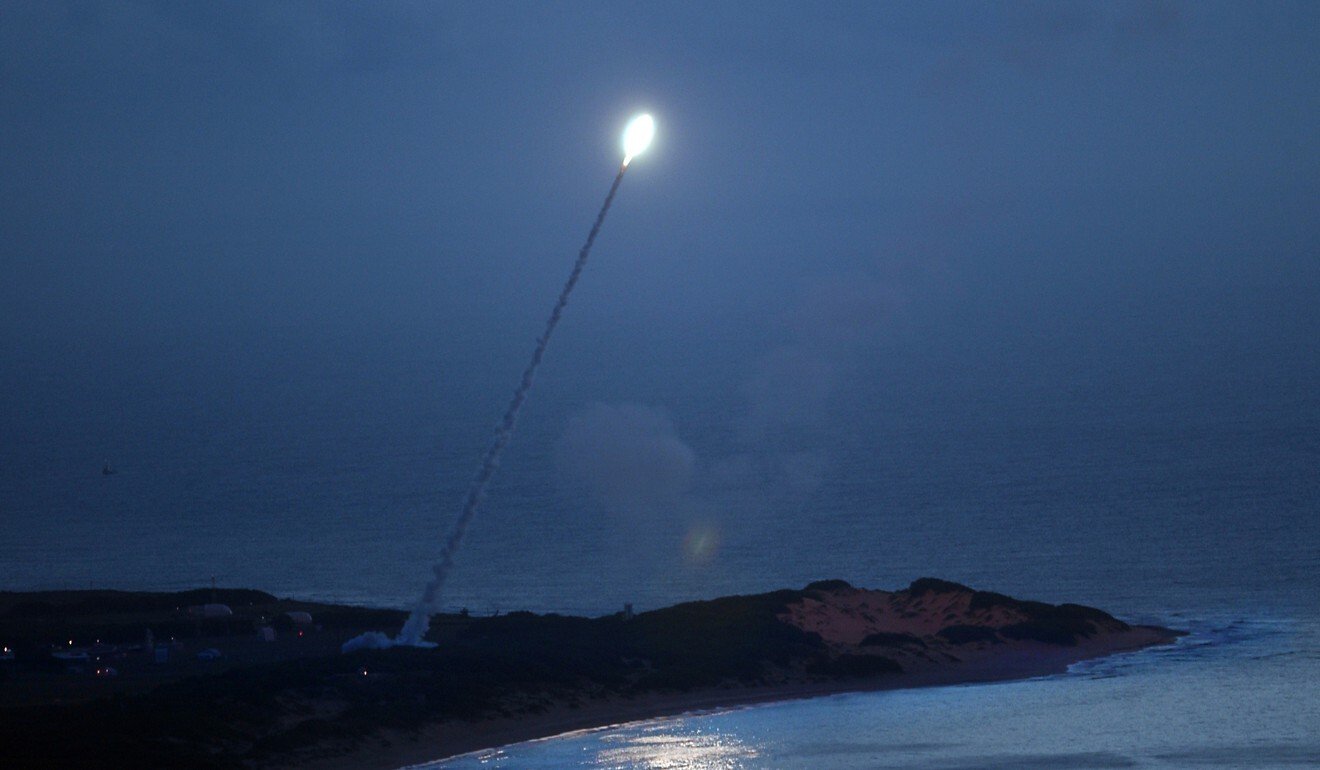
US-China relations: shooting down of mock ICBM was warning to Beijing, observers say
- ‘SM-3 Block IIA interceptor test could be seen as a response to China launching two aircraft carrier killer missiles into the South China Sea,’ military expert Zhou Chenming says
- US wanted to show its Asian allies it is still able to protect them, he says
He was referring to reports that the People’s Liberation Army fired a DF-26B and a DF-21D from separate sites into the sea in August, as covered by the South China Morning Post at the time.
Beijing has made no comment about either the launch of the missiles – known as “aircraft carrier killers” – or the mission’s apparent success.
In the US exercise on Tuesday, the latest version of an Aegis SM-3 missile built by American firm Raytheon Missiles & Defence was fired from a destroyer in the Pacific, northeast of Hawaii. Its target was launched from a test site in the Marshall Islands, the Pentagon said.

Zhou said the US had played up China’s missile launch to justify increasing its military presence in the Pacific and had used the interceptor test to show it still had military superiority in Asia.
“[It wanted to show its] Asian allies that Washington is still able to protect them,” he said.
The US exercise was the first time a missile interceptor had been launched from a ship at sea hit to destroy a mock ICBM in flight. Previous tests against ICBM targets had used interceptors launched from underground silos in the United States.
But Hong Kong-based military commentator Song Zhongping said the SM-3 Block IIA did not have the capability to stop Chinese missiles like the DF-41 ICBMs and DF-26B intermediate-range ballistic missiles because of their superior manoeuvrability and rapid trace changes in flight.
“The [SM-3’s] capability against a DF-41 is very limited, but it would be a threat to ICBMs developed by North Korea and Iran,” he said.
North Korea on October 10 unveiled its largest-ever, road-mobile ICBM during a military parade to mark the 75th anniversary of the founding of its ruling party.
“However, the [US] test will spur China to step up its missile renewal programme to upgrade its old generation ballistic missiles,” Song said.
The SM-3 Block IIA was jointly developed by Raytheon and Japan’s Mitsubishi Heavy Industries. In August 2019, the US approved the sale of up to 73 SM-3 IIA missiles to Japan for an estimated US$3.3 million. The weapons will be installed at two sites in the East Asian country and expected to become operational in 2025.

A Chinese military source said that besides the twin launches of the “aircraft carrier killer” missiles, the PLA Rocket Force also in August launched two DF-21s from a site in the northwest of the country to strike targets in the southern region of Guangxi.
“The Guangxi missile drill was aimed at warning Taiwan’s independence-leaning ruling Democratic Progressive Party that the PLA has the capability to hit specific targets on land,” the source said.
In contrast, the missiles aimed at the ship near the Paracel Islands were “specifically intended as a warning to the US navy”, the person said.

